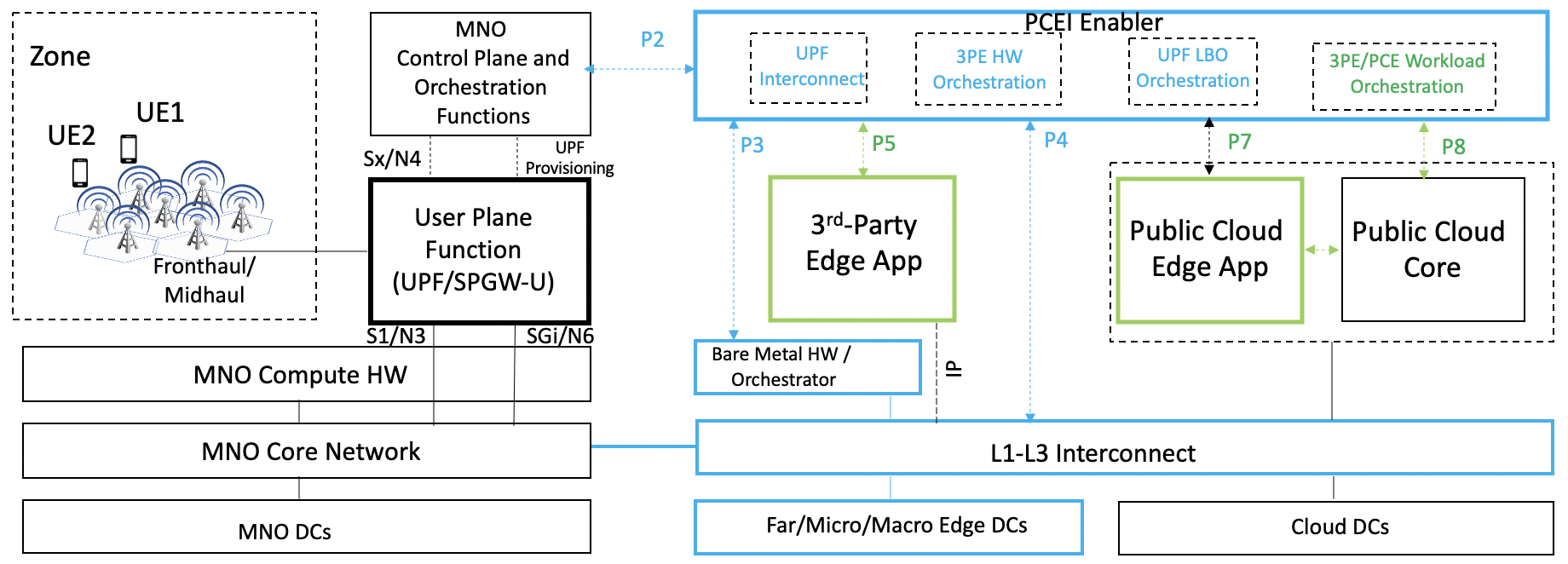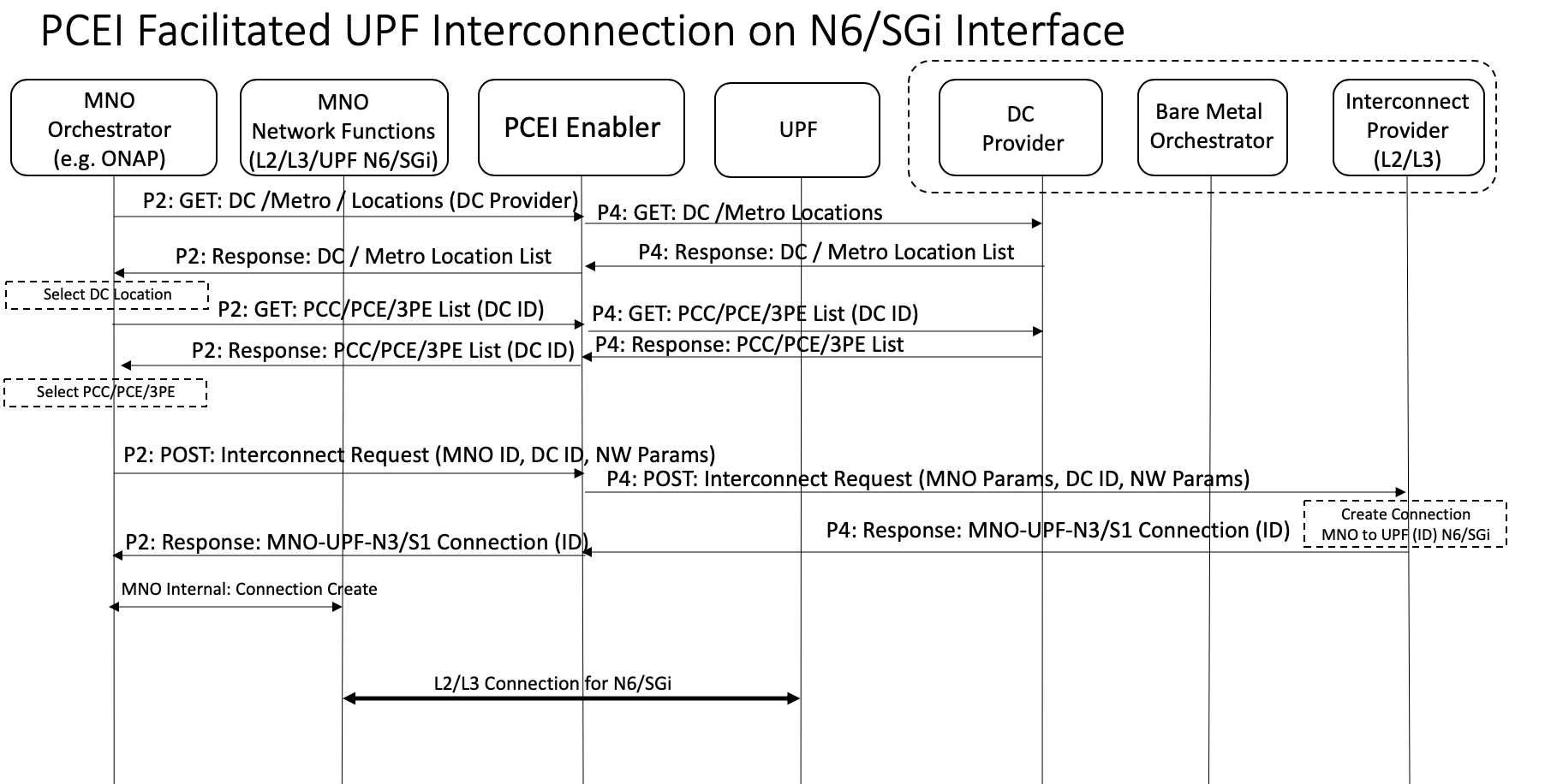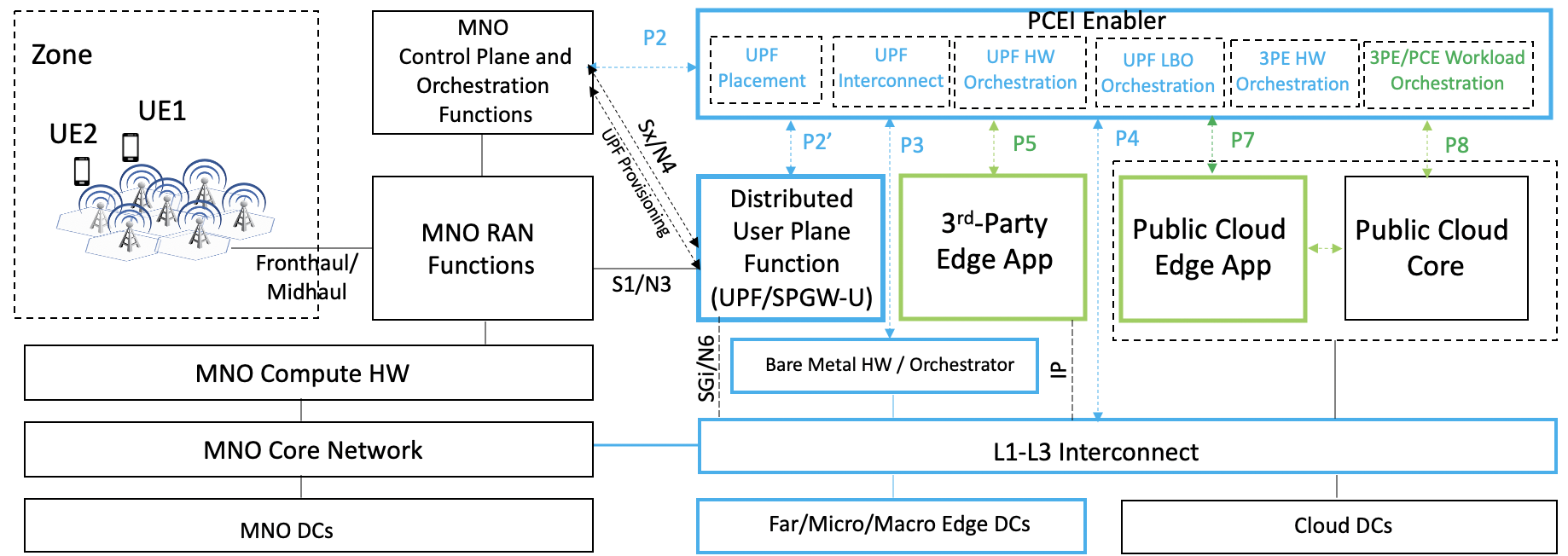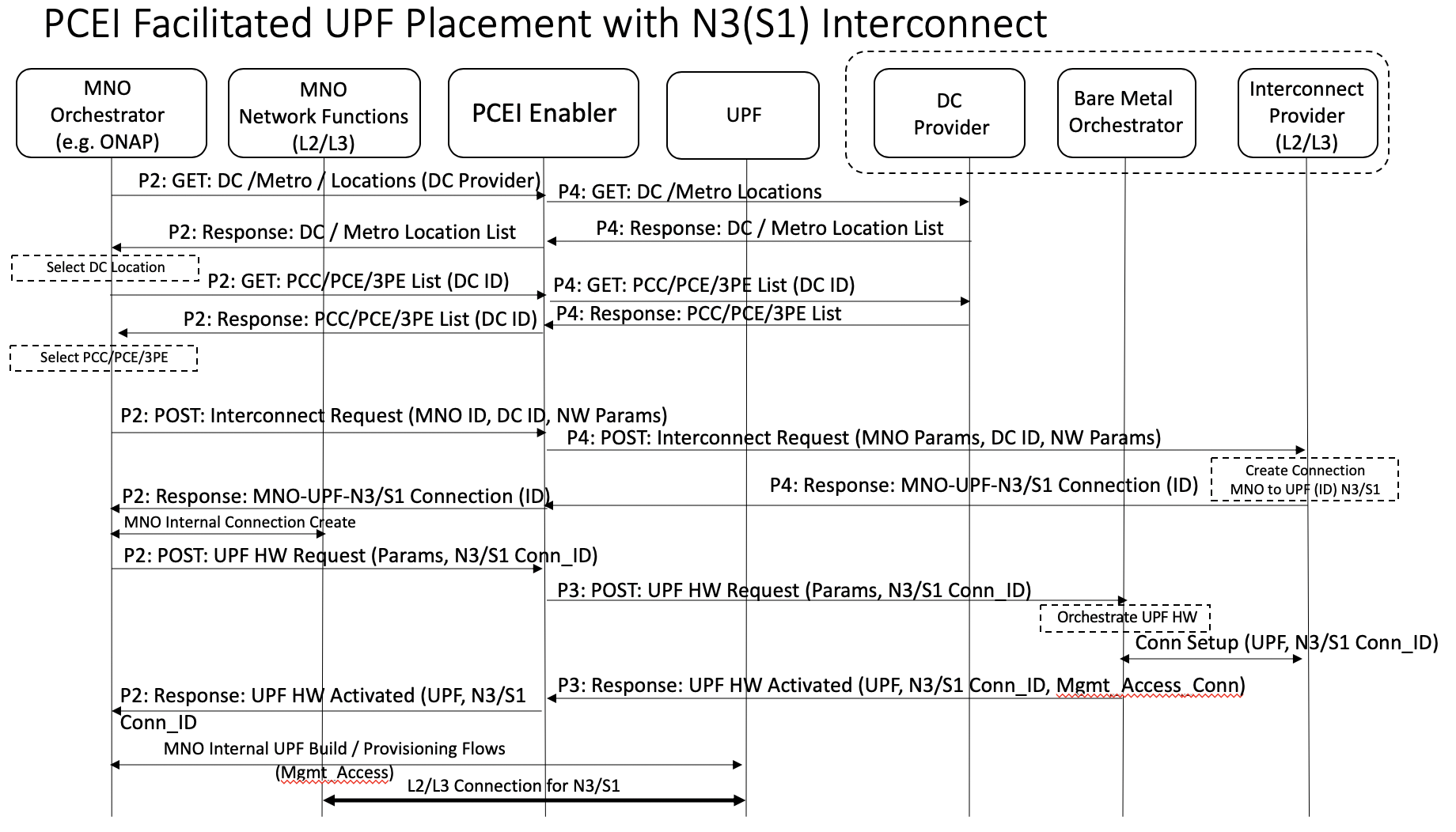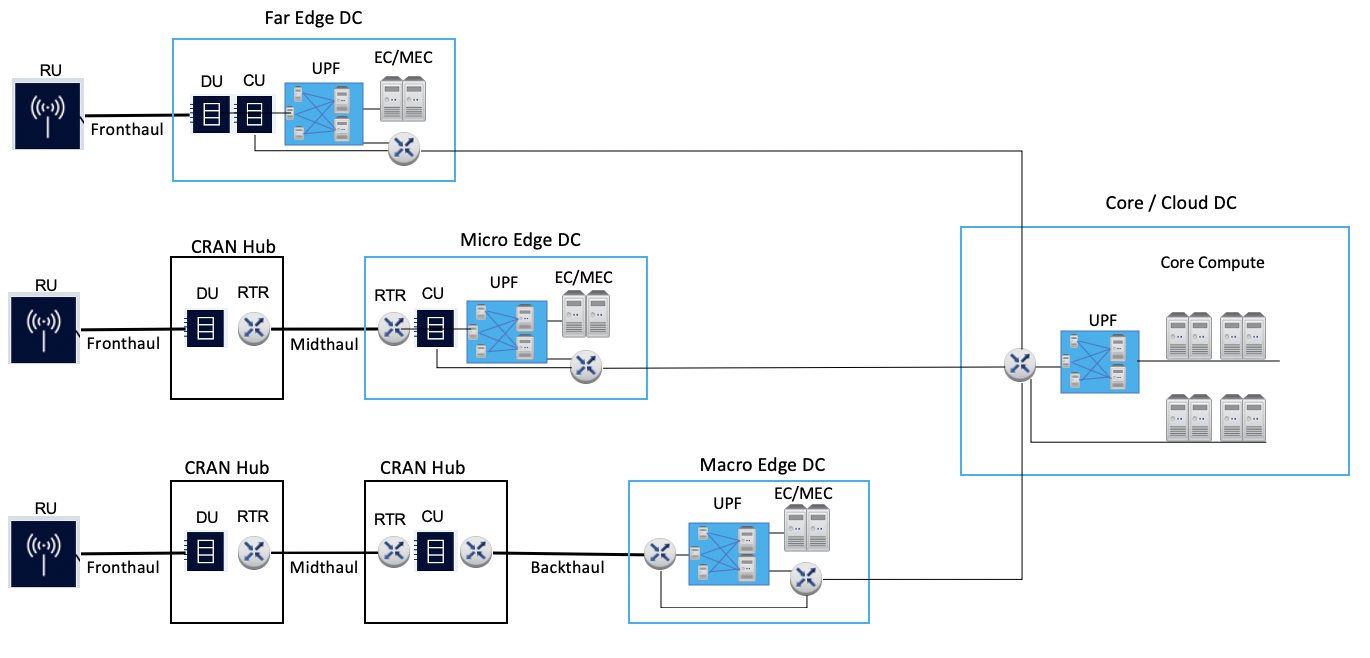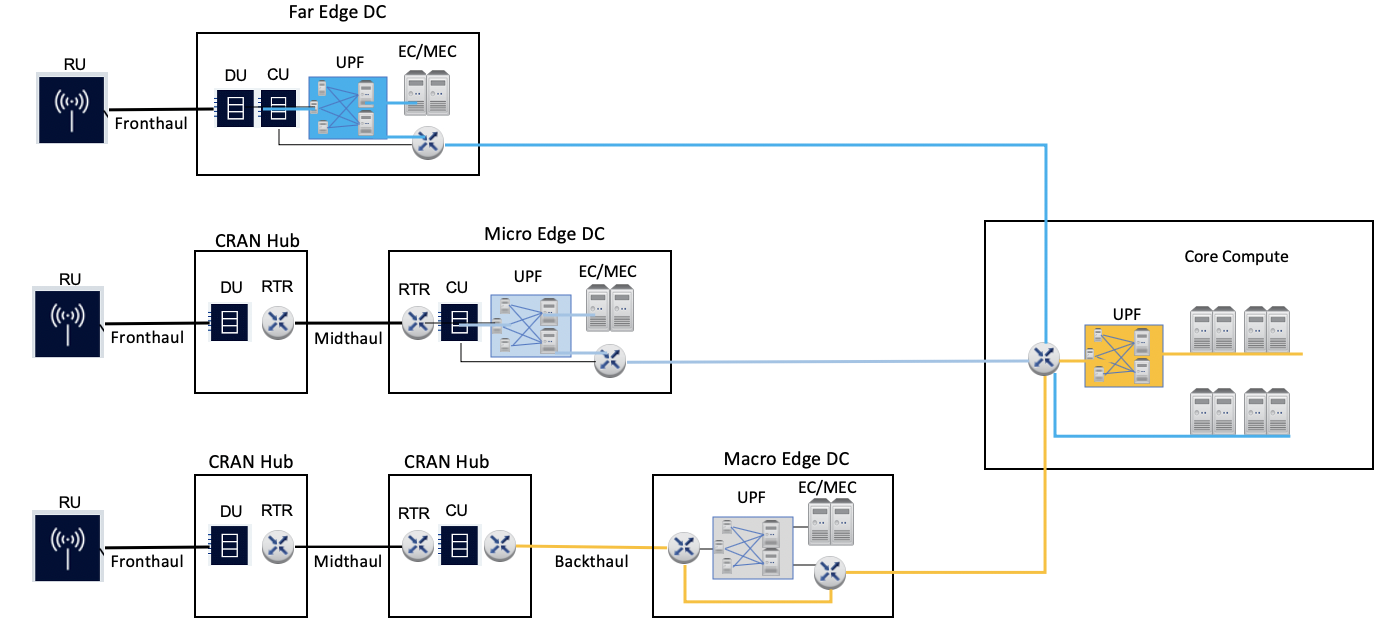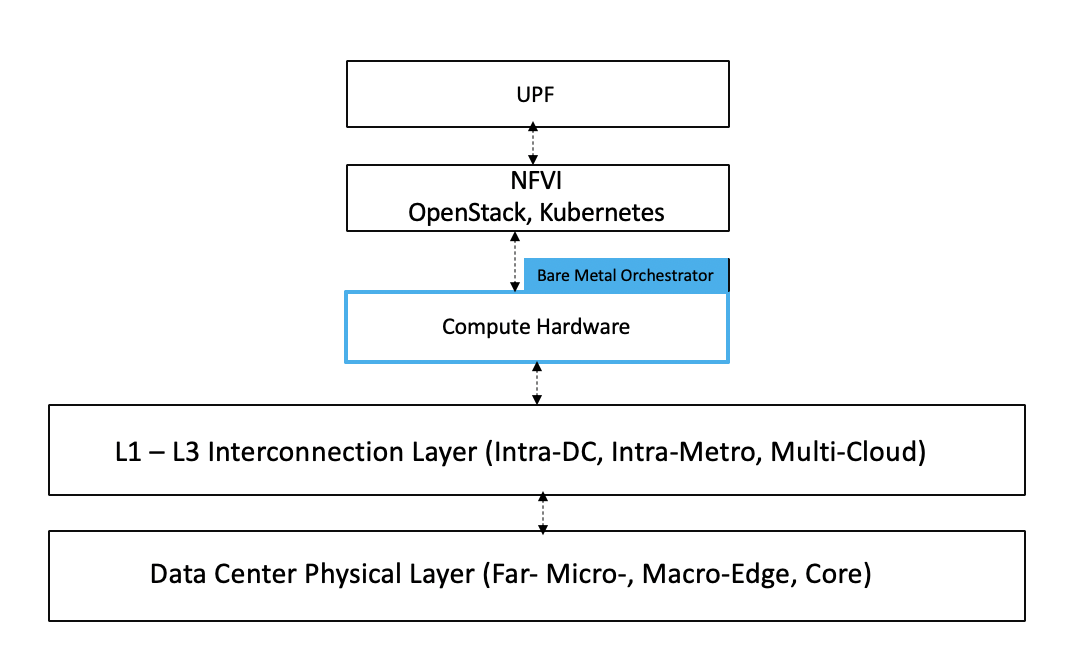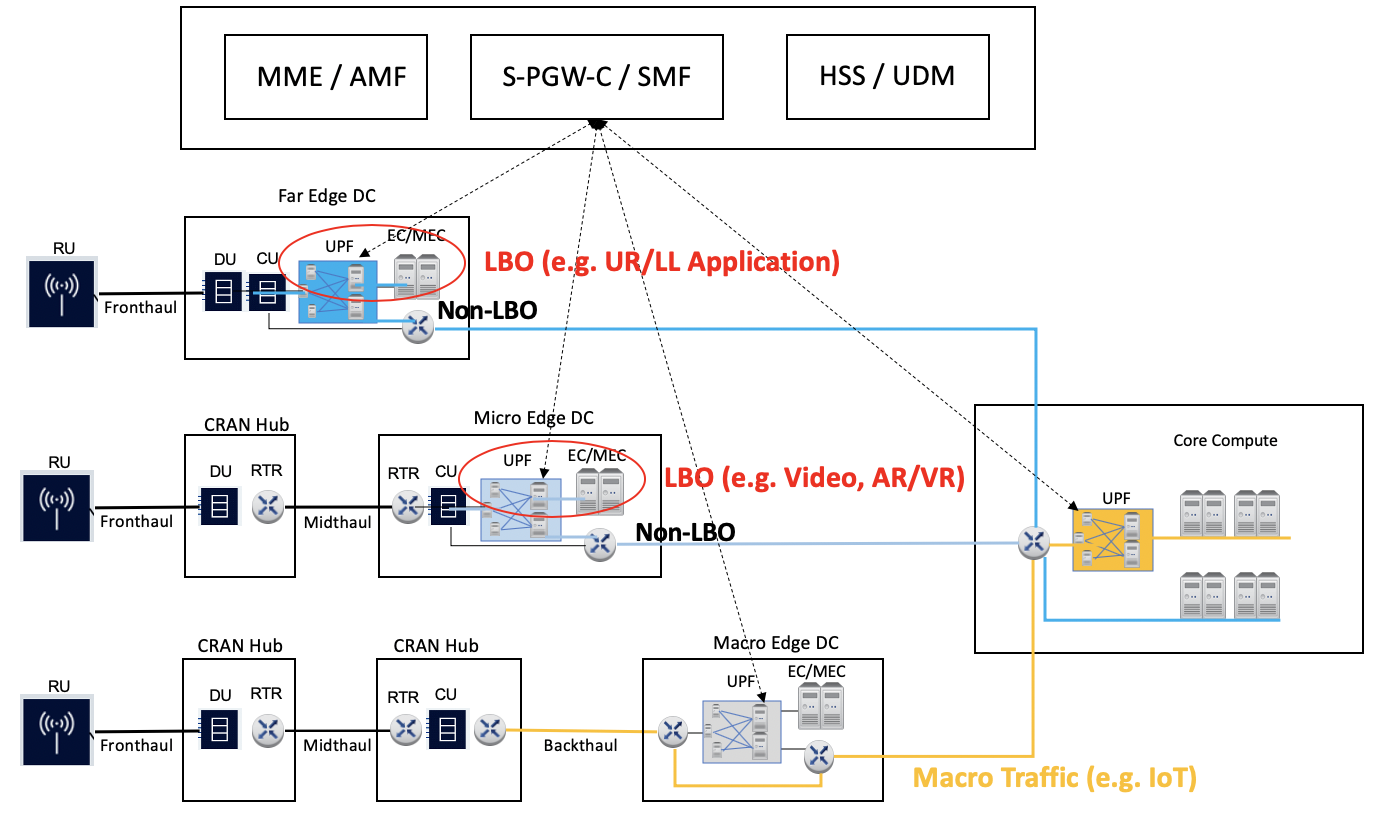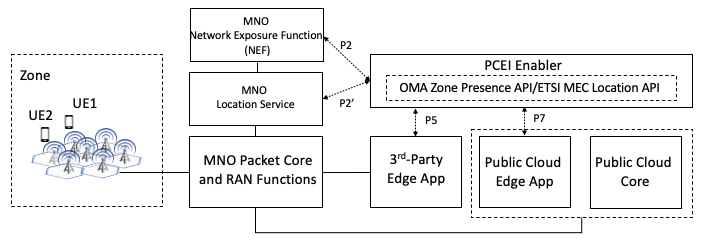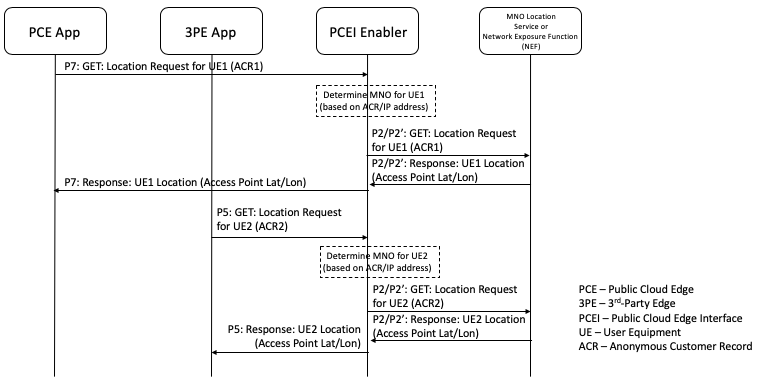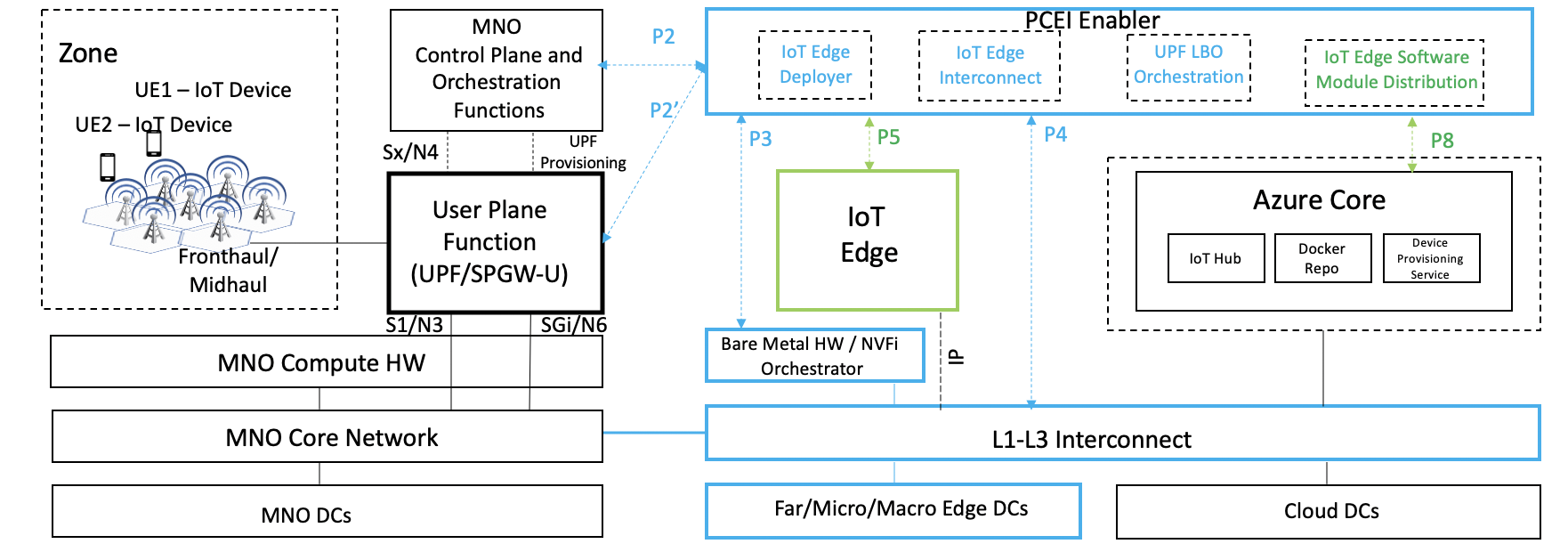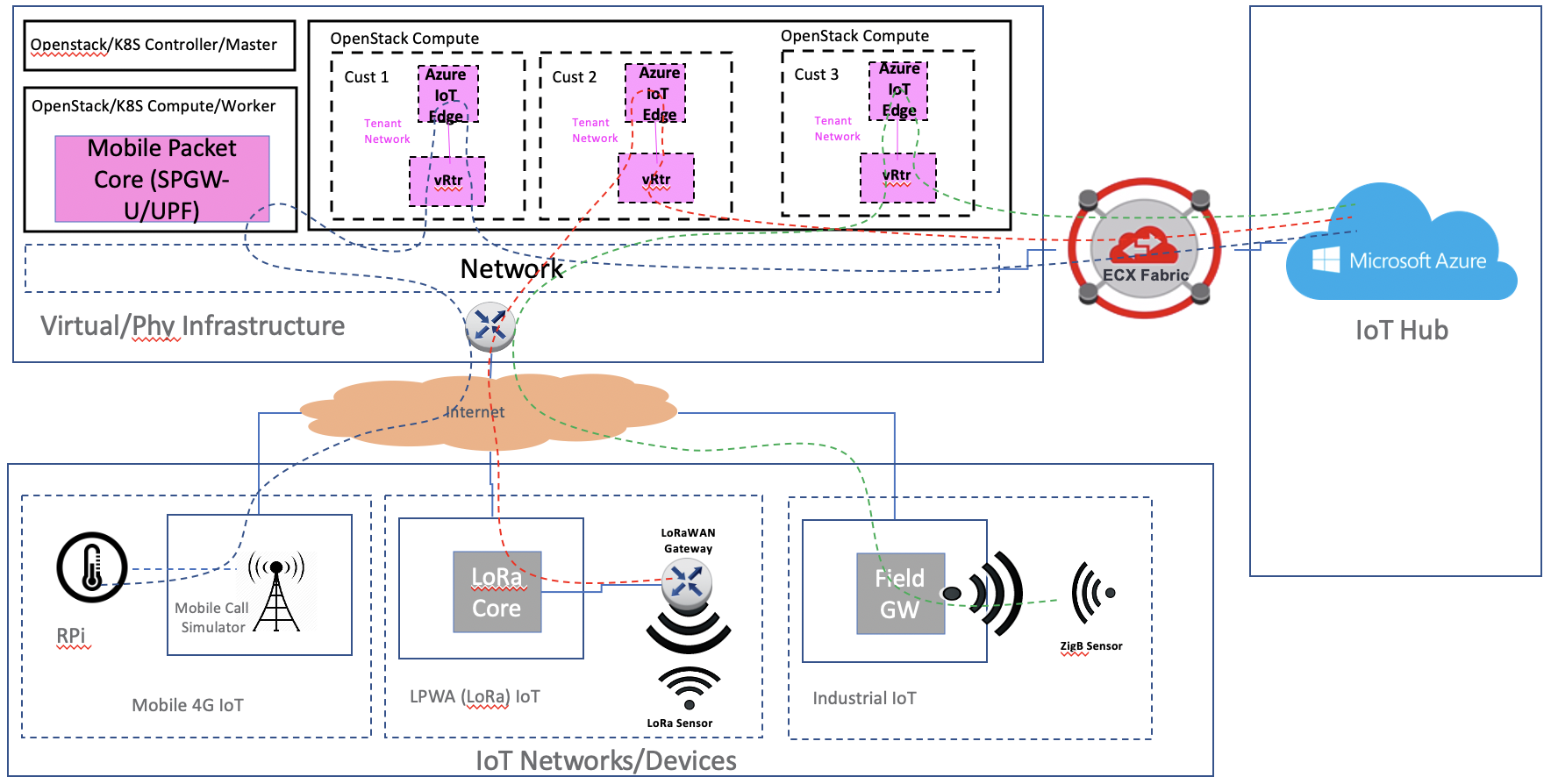User Plane Function Distribution and Local Break-Out
- UPF Distribution/Shunting capability -- distributing User Plane Functions in the appropriate Data Center Facilities with qualified compute hardware for routing the traffic to desired applications and network/processing functions/applications.
- Local Break-Out (LBO) – Examples: video traffic offload, low latency services, roaming optimization.
The UPF Distribution use case distinguishes between two scenarios:
- UPF Interconnection. The UPF/SPGW-U is located in the MNO network and needs to be interconnected on the N6/SGi interface to 3PE and/or PCE/PCC.
- UPF Placement. The MNO wants to instantiate a UPF/SPGW-U in a location that is different from their network (e.g. Customer Premises, 3rd Party Data Center)
UPF Interconnection Scenario
Assumptions:
- MNO hosts UPF/SPGW-U in their network.
- MNO provisions all UPF functions.
- MNO may request UPF Interconnection for Sgi/N6 interface in a required Metro to 3PE/PCE via APIs (on P2)
- Bare Metal Orchestration Provider and Interconnect Provider expose Data Center Location / Metro to PCEI Enabler via APIs (on P3 and P4)
- 3PE and PCE providers expose Data Center Location / Metro to PCEI Enabler via APIs (on P5 and P8/P7)
- PCEI Enabler may request Bare Metal Orchestration for Distributed UPF via APIs (on P3)
- PCEI Enabler may request Interconnect for MNO UPF (L2/L3) via APIs (on P4)
- PCEI Enabler may request PCC/PCE and/or 3PE Controller to instantiate workload instances for LBO processing via APIs (on P8/P5)
UPF Interconnection (N6/SGi) Call Flow Sketch
Notes:
- Does not include interconnect to 3PE/PCE/PCC - to be added
- Does not include 3PE HW Orchestration - to be added
- Does not include UPF LBO Orchestration - to be added
- Does not include 3PE/PCE Workload Orchestration - to be added
UPF Placement Scenario
Assumptions:
- MNO supports CUPS (5G NSA) and/or UPF (5G SA).
- MNO may request UPF Placement / Metro, and 3PE/PCE Access / Metro, via APIs (on P2)
- Bare Metal Orchestration Provider and Interconnect Provider expose Data Center Location / Metro to PCEI Enabler via APIs (on P3 and P4)
- 3PE and PCE providers expose Data Center Location / Metro to PCEI Enabler via APIs (on P5 and P8/P7)
- PCEI Enabler may request Bare Metal Orchestration for Distributed UPF via APIs (on P3)
- PCEI Enabler may request Bare Metal Orchestration for 3PE via APIs (on P3)
- PCEI Enabler may request Interconnect for Distributed UPF N3/S1 and N6/SGi traffic (L2/L3) via APIs (on P4)
- PCEI Enabler may expose UPF management access to MNO
- MNO may provision the Distributed UPF over management access
- PCEI Enabler may provision UPF connectivity and LBO configuration (based on the UPF provisioning model) over P2’ using appropriate protocols
- PCEI Enabler may request PCC/PCE and/or 3PE Controller to instantiate workload instances for LBO processing via APIs (on P8/P5)
UPF Placement Call Flow Sketch
Notes:
- Does not include interconnect to 3PE/PCE/PCC - to be added
- Does not include 3PE HW Orchestration - to be added
- Does not include UPF LBO Orchestration - to be added
- Does not include 3PE/PCE Workload Orchestration - to be added
UPF Placement Options
API Structure
To be added
UPF Interconnect Options
UPF Hardware Selection / Orchestration
UPF Configuration Orchestration - Local Break-Out Options
3PE/PCE Workload Instance Distribution
To be added
Location Services
- Location Services -- location of a specific UE, or identification of UEs within a geographical area, facilitation of server-side application workload distribution based on UE and infrastructure resource location.
Assumptions:
- MNO provides a Location Service (LS) compliant with OMA Zonal Presence API (OMA-TS-REST_NetAPI_ZonalPresence)
- MNO may expose the Location Service via the Network Exposure Function (NEF)
- A Public Cloud Edge (PCE) instance is associated with a Zone (collection of Access Points such as small cells) provided by an MNO
- A 3rd-Party Edge (3PE) instance is associated with a Zone (collection of Access Points such as small cells) provided by an MNO
- An application/workload in the PCE requires Location Information (e.g. coordinates of the Access Point) for the UE/subscriber
- An application/workload in the 3PE requires Location Information (e.g. coordinates of the Access Point) for the UE/subscriber
- PCEI Enabler facilitates Zonal Presence API Request/Response routing between PCE and the MNO LS and between the 3PE and the MNO LS
Azure IoT Edge
Assumptions:
- MNO hosts UPF/SPGW-U in their network.
- MNO provisions all UPF functions.
- MNO may request Deployment of IoT Edge on Bare Metal or NFVi via APIs (on P2)
- PCEI Enabler IoT Edge Deployer may request HW or Virtual resources (e.g. VM/Container) (on P3)
- PCEI Enabler IoT Edge Deployer may provision IoT Edge (install runtime, deploy standard modules, register with IoT Hub) via APIs/Deployer Code (on P8/P5)
- PCEI Enabler may request Interconnect for IoT Edge between MNO and Azure (L2/L3) via APIs (on P4)
- PCEI Enabler may request UPF LBO for MNO to direct customer traffic to IoT Edge (on P2/P2’)
- PCEI Enabler may facilitate deployment of custom IoT Edge modules
PCEI Enabler IoT Edge Deployer Functions
- Deploy a base Ubuntu VM
- Download and Install Microsoft GPG public key to apt config
- Install moby engine and cli
- Install azure iot edge
- Modify iot edge config file using customer defined parameters (azure hub url, keys, scope id, etc)
- Deploy iot edge agent
- Deploy iot edge hub module
- Install certificates if edge is used as a gateway
- Restart iot edge
PCEI Enabler IoT Edge Interconnect Functions
- Request virtual connectivity to MNO
- Request virtual connectivity to Azure (e.g. ExpressRoute)
